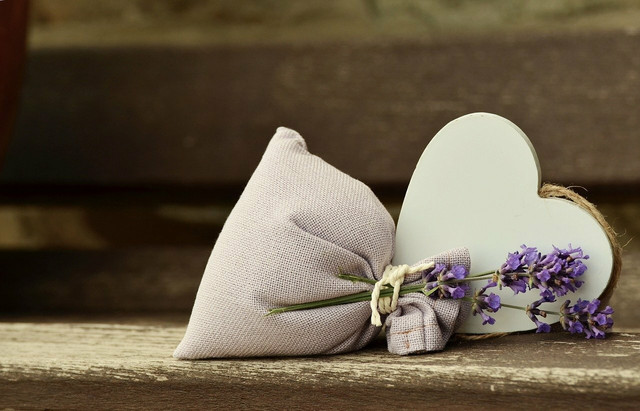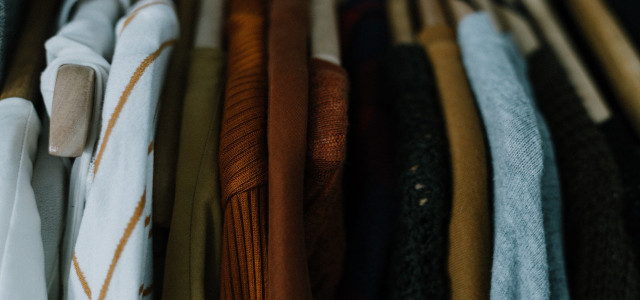What are mothballs and why do they produce such a particular smell? How can you remove this smell from your home? These simple steps will help you get rid of that mothball smell for good.
Mothballs are a pesticide, commonly used to prevent moths and other pests from ruining fibers such as wool and other fabrics. As a pesticide made from chemicals, they can be quite harmful to humans and pets if used incorrectly and can leave an unfortunate smell in your home. Read on to learn how to get rid of the smell and for some alternatives to using mothballs.
What Causes the Unpleasant Smell of Mothballs

(Foto: CC0 / Pixabay / Victoria_Borodinova)
Mothballs vapors can cause an unpleasant (and harmful) smell if not used properly. Experts recommend only utilizing mothballs as suggested on the label: to enclose the mothballs in an airtight container with whatever item you are trying to rid of pests. After the mothballs have been used in this manner, wash the items to remove the harmful chemicals before use.
Mothballs are often used in commonly misunderstood ways – such as in closets, basements/attics, or in garment bags. This allows the vapors from the mothballs to escape and cause the unfortunate smell that can be tough to get rid of. According to the Florida Department of Agriculture and Consumer Services (FDACS) this smell is actually harmful and toxic chemicals escaping from the mothball and should not be inhaled by people or pets. If inhaled, the chemicals can cause headaches and even dizziness. FDACS also warns not to directly touch the mothball, as it can cause a reaction on the skin.
How to Get Rid of the Smell of Mothballs from Fabrics and Textiles
The best way to get mothball smells out of clothes, textiles, or other fabrics is to wash them with vinegar once through the cycle in a washing machine. Then wash with warm water and detergent (remember to purchase eco-friendly detergent with a high rating on EWG, like these).
If you are unable to wash the textile in the washer due to its sensitive nature, you can hand wash these clothes with warm water and mild detergent and let them air dry completely, outdoors if possible, before use. Drying laundry naturally has many additional benefits, such as natural disinfection.
Note: Washing clothes with vinegar has many other benefits as well.
How to Get Rid of Mothball Smell in Shoes
A simple way to remove the mothball smell in shoes is to use a vinegar and lemon juice solution and spray it inside the shoe. Alternatively, you can take a bit of coffee powder folded up inside some paper and place it in the shoe for a few days to remove the odor.
How to Remove Mothball Smell from Furniture
If your furniture includes fabric, such as a couch, a rug, or a curtain, sprinkle baking soda or spray it with a mixture of vinegar and baking soda, and let the mixture sit overnight. Vacuum the furniture to get rid of the baking soda remnants and the smell of mothballs. If your furniture is made from wood, use a vinegar and water solution to gently wipe the surfaces.
Removing the Smell of Mothballs from Your Home
If the mothball smell lingers in your home, open windows and air out the space. If the smell still persists after a day or two, use lavender oil or lavender sachets to further dissipate the smell. You can use lavender directly on wood, or leave dried lavender in the space for a few days. Another recommendation is to leave bowls of coffee powder or baking soda in the area which will absorb some of the smell.
Read on for more sustainable alternatives to mothballs.
Natural Alternatives to Mothballs



(Foto: CC0 / Pixabay / congerdesign)
There are many natural alternatives to mothballs that will still deter pests but are non-poisonous to humans and pets. These options will also not leave an unpleasant odor as mothballs do. Some examples include:
- lavender – use sachets, essential oil (available on Amazon**), or the actual plant hanging in the space
- mint – make sachets from dried peppermint, use essential oil (available on Amazon**), or use a highly rated cleaner on EWG made with mint on surfaces to naturally repel pests
- cedar – blocks or chips of cedar (available on Amazon**) can be used to naturally repel pests, and are safe to hang in a closet or near garment bags
Read on:
- How to Get Rid of Aphids: Helpful Home Remedies
- The 12 Best Plants to Naturally Repel Mosquitoes
- The 6 Best Ways to Get Rid of Roaches Naturally
Do you like this post?








